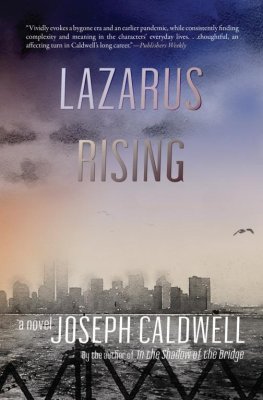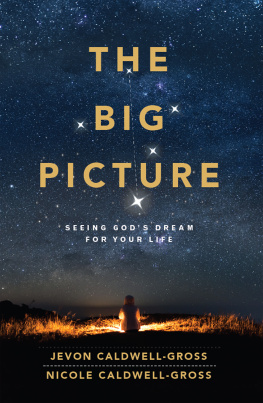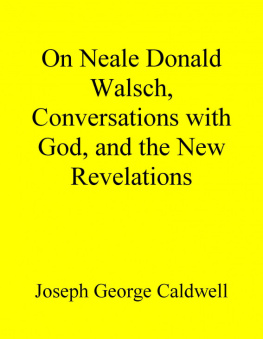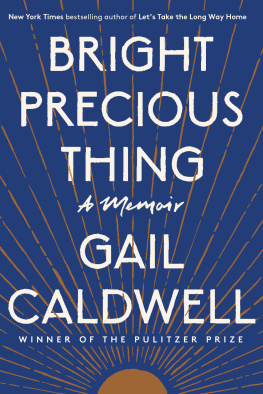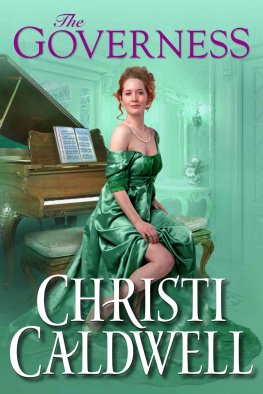Joseph Caldwell - In the Shadow of the Bridge: a memoir
Here you can read online Joseph Caldwell - In the Shadow of the Bridge: a memoir full text of the book (entire story) in english for free. Download pdf and epub, get meaning, cover and reviews about this ebook. year: 2019, publisher: Delphinium Books, genre: Detective and thriller. Description of the work, (preface) as well as reviews are available. Best literature library LitArk.com created for fans of good reading and offers a wide selection of genres:
Romance novel
Science fiction
Adventure
Detective
Science
History
Home and family
Prose
Art
Politics
Computer
Non-fiction
Religion
Business
Children
Humor
Choose a favorite category and find really read worthwhile books. Enjoy immersion in the world of imagination, feel the emotions of the characters or learn something new for yourself, make an fascinating discovery.

- Book:In the Shadow of the Bridge: a memoir
- Author:
- Publisher:Delphinium Books
- Genre:
- Year:2019
- Rating:4 / 5
- Favourites:Add to favourites
- Your mark:
- 80
- 1
- 2
- 3
- 4
- 5
In the Shadow of the Bridge: a memoir: summary, description and annotation
We offer to read an annotation, description, summary or preface (depends on what the author of the book "In the Shadow of the Bridge: a memoir" wrote himself). If you haven't found the necessary information about the book — write in the comments, we will try to find it.
In the Shadow of the Bridge: a memoir — read online for free the complete book (whole text) full work
Below is the text of the book, divided by pages. System saving the place of the last page read, allows you to conveniently read the book "In the Shadow of the Bridge: a memoir" online for free, without having to search again every time where you left off. Put a bookmark, and you can go to the page where you finished reading at any time.
Font size:
Interval:
Bookmark:
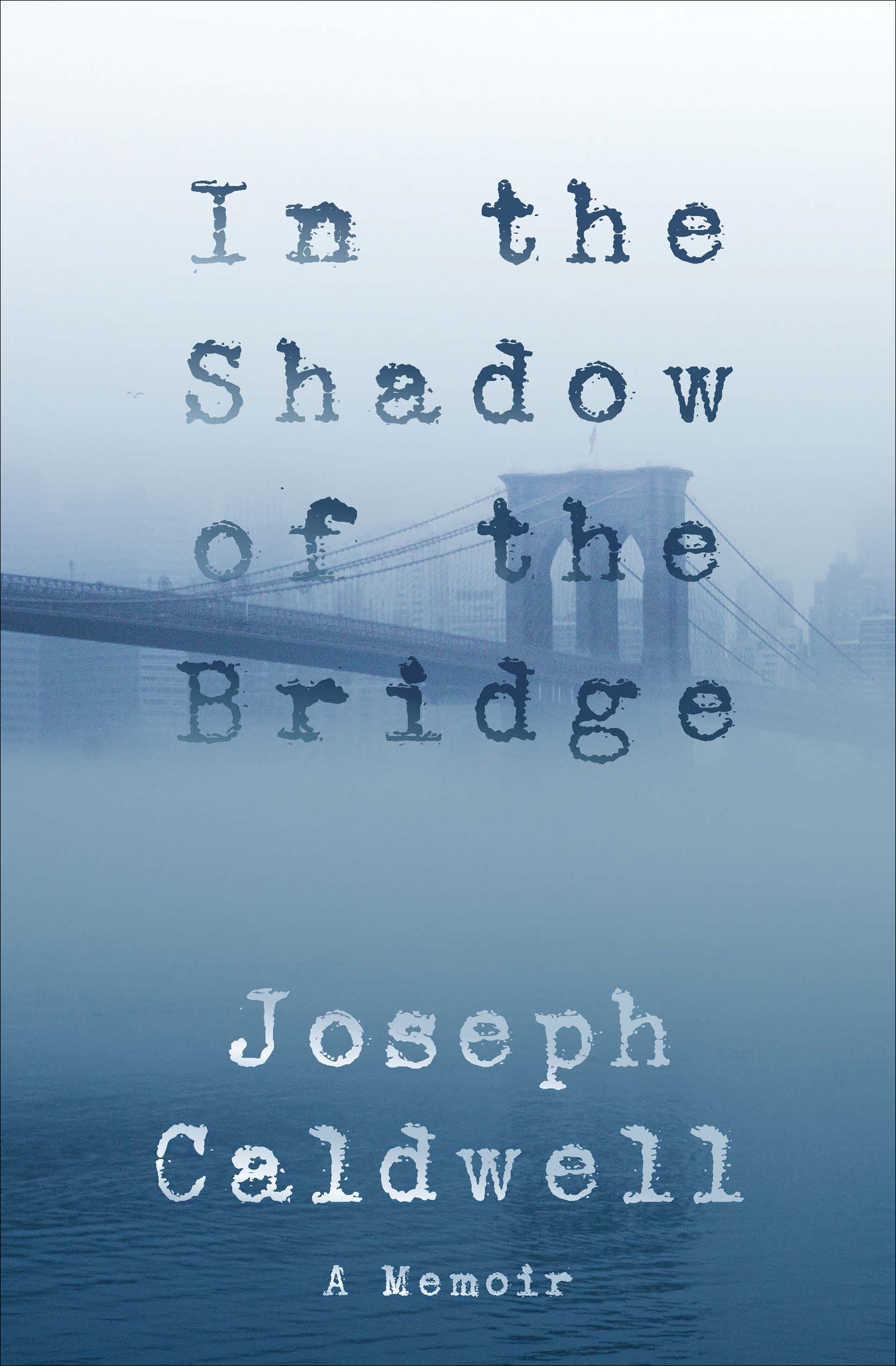
In the Shadow of the Bridge
A Memoir
Joseph Caldwell

For David Barbour and Marc Tallent
Only in darkness is thy shadow clear.
Hart Crane, The Bridge
The Beginning
This story, with a beginning, a middle, and an end, starts on the footpath of the Brooklyn Bridge at dawn, May 25, 1959. I was headed home, coming from a friends birthday party on Willoughby Street in Brooklyn. After I came off the long ramp that led to the elevated footpath, I looked to my right, toward the Manhattan Bridge not that far to the north. There, at its Brooklyn edge, was a factory of gray bricks going black with soot that had a square clock tower. The clock read ten past five. Id been out all night, partying. Ive got to change my life, I said to myself (not knowing it was about to change radically before I had finished crossing the bridge). The way I was living was not acceptable. It should be admitted that this was a familiar refrain.
There on the bridge I admitted to myself that sex had been central to my life going back to when, in the eighth grade, after I had crossed the threshold into puberty, I fell madly in love with a fellow student Id known since the first grade.
I couldnt keep my hands off the poor guy. So obvious did my obsession become that my eighth-grade nun, the amazing Sister Adelaide, kept me after school one day. With quiet and unaccusing confidentiality, she told me that people were beginning to talk, hinting that I might be what she called a softie.
Do you know what a softie is? she asked.
No, I lied.
Its a boy who does impure things with other boys.
Oh, I said.
The conversation went no further. I had been duly warned.
(For Sister Adelaide, Ive used the word amazing and with good reason. It cant have been easy for her, a nun, to confront one of her favored pupils with such a difficult, even forbidden subject. She had made no accusation. She had wanted only to warn and protect me. Amazing indeed.)
I lived in a tenement in the shadow of the bridge in a so-called cold-water flat in which there was plenty of hot water but no central heating. My building was angled against the bridge. I could, if I were so inclined, go from my roof onto the bridge. Of course, Id have to brave the traffic, then climb up to the raised footpath. Small wonder I did it so infrequently. But if you stood on the toilet seat and reached out the window, you could touch some of the great gray stones.
If youre an aspiring writer and you come to New York, my apartment on Hague Street was where you would want to live. Among its many recommendations was a rent of twenty-four dollars a month. Then, too, because no heat was provided, I had a Franklin stove, a cast-iron-enclosed fireplace whose doors could be left open so I could sit, transfixed, staring into the burning woodwood I had scavenged from outside the industrial lofts that then lined Cliff Street nearby. I would gather up the discarded crates and boards as if I were foraging in a forest, take them home, bash and saw them into pieces small enough to fit into the grate in the stove.
Hague Street itself was less than a quarter of a block longa diagonal from Pearl Street to Cliffone car wide with sidewalks that could accommodate only one person at a time. My building shared this abbreviated block with a gutted pitch-roofed house with dormer windows that was, at the time, then doing service as a wastepaper warehouse. (It must have been a beautiful one-family home in the days of its former glory.)
My kitchen was the largest of the three railroad rooms. Six revelers could sit around the center-placed table. Also, there was the bathtub, lifted on four claw-footed legs so that its enameled metal covering could be used as a surface for preparing food as well as provide a drainboard space for washed dishes.
A sometime ambition never realized: with the bathtub right there near the kitchen table, Id considered entertaining dinner guests by having a qualified someone take a bath during the meal, rinsing and rising at frequent intervals. It never happened. One of the more than several reasons Id like to return to Hague Street.
An impossibility, of course. Number Eight Hague Street and the street itself no longer existall demolished and obliterated to make possible the automobile ramps connecting the bridge to the East Side Highway. The bridge, fortunately, survived, but the New York of that time is long gone. Let the twenty-four-dollar-a- month rent give an accurate measure of the change. Also, attitudes toward gays have been radically revised. Marriage equality says enough. Since this story takes place in a city so different from the one in which we live now and since it was experienced by a somewhat different person from the one I have become, allow me to set down some incidents and tell some anecdotes that, ultimately, are a necessary part of the tale I want to tell.
I decided to move to New York in the fall of 1950, after my honorable discharge from the Air Force and a few months spent at home in Milwaukee, as well as a summer in South Haven, Michigan, where Id stage-managed a summer-stock theater company. I told my mother I was moving to New York to be in the theater, possibly writing plays. Her calm response was, You have a right to make your own mistakes.
My older brother, Jim, objected. He was going back into the army, having served with the OSS during World War II. He pointed out that our mother, having given birth to and reared eight children, would be left completely alone, which was true. My oldest two sisters, Mary Ellen and Rosebud, had become nuns and my brother Tom had joined the Jesuits. My sister Sally had accepted a teaching job in Michigans Upper Peninsula and my other sisters, Helen Margaret and Franny, had married.
But I had to go to New York. The theater, yes, but I also needed sexual freedom, despite my successful covert activities starting in the summer between my freshman and sophomore years at Marquette High, when Id found in a movie theater in downtown Milwaukee a ready possibility where I might offer what I had to offer. Out of the Air Force, I was now twenty-one. I had to break free. For me, it wasnt even a dilemma.
But my mother eased my way. I remember her words: All my children have done what they wanted to do when the time came. Just because youre the last doesnt mean it should be any different. And that was that. Still, I would have gone no matter what.
(Years later, while at Yaddo, the artists retreat in Saratoga Springs, Rosemarie Beck was also in residence. Becky, as we called her, was a painter but also an astrologist. As a project, she did each of our charts to see if there were an astrological constant among creative people.
Ive forgotten most of what she said in our session together except for one encouraging discovery: You have a ruthless streak in you.)
Two actors from South Haven, Lenny Rosenson and Loretta Leversee, and I set out for New York in Lennys Willys, a compact car, made even more compact by our stacked worldly goods sharing the back seat with the one whose turn it was to be squashed in while the other two luxuriated in the front seat, their legroom intruded upon only by bags and pouches stuffed with intimate needs, like toiletries and Twinkies.
We arrived on September 12, 1950, and checked into the Arlington Hotel on West Twenty-Fifth Street, now more aptly named the Heritage Hotel. After three or four days and nights, we found an apartment at 539 West 49th Street. Furnished (sort of), its rent was eleven dollars a week, a sum divided equally among the three of us. I was in New York. No. I was home.
Font size:
Interval:
Bookmark:
Similar books «In the Shadow of the Bridge: a memoir»
Look at similar books to In the Shadow of the Bridge: a memoir. We have selected literature similar in name and meaning in the hope of providing readers with more options to find new, interesting, not yet read works.
Discussion, reviews of the book In the Shadow of the Bridge: a memoir and just readers' own opinions. Leave your comments, write what you think about the work, its meaning or the main characters. Specify what exactly you liked and what you didn't like, and why you think so.

